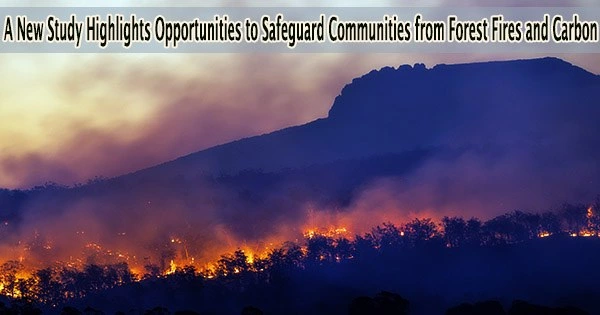Concerns about the loss of carbon absorbed and stored in forests from decades to centuries of tree growth have increased along with the wildfire and climate disasters. A recent analysis identifies areas where current wildfire mitigation efforts might be optimized in order to minimize carbon loss from wildfires and benefit both communities and the environment.
New research published in the journal Environmental Research Letters highlights widespread “opportunity hot spots” in the western United States for using proactive forest management, such as forest thinning, prescribed fire, and cultural burning, to reduce the risk of losing carbon to future wildfires.
The study, a collaboration among The Nature Conservancy, University of Montana, and USDA Forest Service, evaluated where living trees and the carbon they store are at risk of burning in the future. In order to determine where human communities are most vulnerable to wildfires, they compared these areas to those mentioned in the Forest Service’s Wildfire Crisis Strategy.
Areas of overlap point out “opportunity hot spots” where mitigation measures can lower the risk of wildfire to communities and carbon.
“Our approach can help land management agencies plan where to invest in proactive forest treatments that simultaneously reduce wildfire-caused carbon loss and protect communities from wildfire,” says the study’s lead author, Jamie Peeler, landscape ecologist and NatureNet Postdoctoral Science Fellow with the University of Montana. “It also could be applied to reduce risk from wildfire to other important values such as municipal water, culturally important plants, recreation, and wildlife habitat.”
As governments take action to address the escalating climate and wildfire crises, they do not need to choose between climate and wildfire-mitigation goals. In the western US, opportunities are widespread to achieve both objectives with strategically placed proactive forest management.
Kerry Metlen
USDA Forest Service Chief Randy Moore added, “This type of science collaboration strengthens our efforts to support land managers in designing and implementing effective projects with multiple benefits, making good work even better. It also is key in informing our overall efforts to address the wildfire crisis facing our nation’s forests by doing the right work, in the right place, at the right time.”
The fire consumes the majority of the carbon lost during a wildfire as it consumes litter, duff, and downed woody material, but over time, trees that were destroyed during a fire degrade, adding another source of carbon loss.
In order to lessen the negative effects of wildfires, including carbon loss, communities and organizations can consider undertaking proactive forest management in the areas identified by the study.
By removing excess fuel, mitigating the effects of a century of fire suppression, and lowering the effects of global warming, proactive forest management can lower the amount of trees lost in wildfires. In order to continue absorbing and storing carbon from the atmosphere and to seed new forests, it can also retain more living trees on the landscape in the wake of a wildfire.
“The need for proactive forest management in California, New Mexico and Arizona is particularly urgent, given that a large portion of their forested area is highly vulnerable to wildfire-caused carbon loss,” says the study’s co-author, Travis Woolley, forest ecologist for The Nature Conservancy in Arizona.
“As governments take action to address the escalating climate and wildfire crises, they do not need to choose between climate and wildfire-mitigation goals,” says Kerry Metlen, senior forest scientist for The Nature Conservancy in Oregon. “In the western US, opportunities are widespread to achieve both objectives with strategically placed proactive forest management.”
















